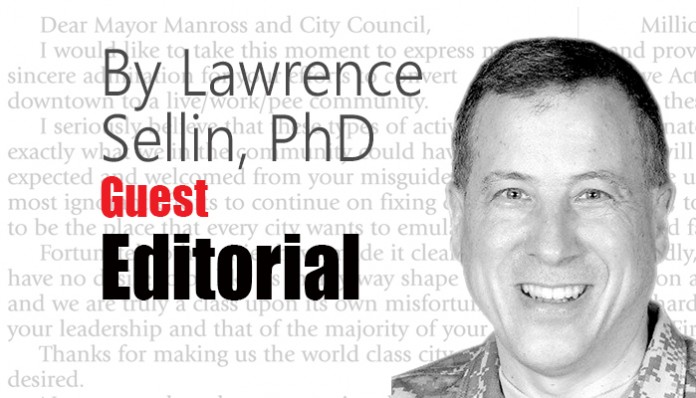Strategically, the recent U.S. attack on the Syrian airfield ordered by President Trump will have little value if it is not followed by steps that change the dynamics on the ground.
At best, it sends a signal that, unlike Barack Obama, the use of chemical munitions could trigger a military response from President Trump, even though conventional ordinance has caused far more injuries, death and destruction.
The “signal,” I think, was meant more to differentiate between Trump and Obama than the weapons used.
The only justification for a single Tomahawk missile strike on a single airfield resides in what follow-up actions will be taken to secure whatever U.S. interests are affected by the Syrian civil war.
So, are there any major interests that would dictate any U.S. intervention?
Probably not, but Trump seems to have now taken ownership of Obama’s foreign policy. That is, regime change – Syrian dictator Bashar al-Assad must go as a prerequisite to resolution of the conflict.
But from where did the idea of regime change in Syria originate?
In August 2010, Obama ordered his advisors to produce a secret report, which eventually became Presidential Study Directive-11 (PSD-11). It recommended that the U.S. should shift from its longstanding policy of supporting stable but authoritarian regimes in the Middle East and North Africa to one backing, what Obama Administration officials considered as “moderate” Islamist groups such as the Muslim Brotherhood and the Turkish AK Party, now led by President Recep Tayyip Erdoğan.
The Tunisian revolution in December 2010 was quickly followed by the Cairo protests that began on January 25, 2011 under the direction of Egypt’s largest opposition group, the Muslim Brotherhood. The protests and associated violence led to the February 11, 2011 resignation of long-time US ally, Egyptian President Hosni Mubarak. There are a number of reports indicating the US cooperated with and attempted to sustain the influence of the Muslim Brotherhood in Egypt.
Implementation of the preemptive regime change component of PSD-11 began in earnest on February 15, 2011, when a rebellion broke out in Benghazi, Libya against the authoritarian regime of Muammar Qaddafi. Within a few weeks of the outbreak of fighting in eastern Libya, Obama has signed a secret order authorizing a covert CIA operation to support Islamist rebel forces seeking to oust Qaddafi.
By mid-March 2011, protests associated with the Arab Spring were breaking out in Syrian cities. Instead of intervening directly, fearing Russian reaction, the Obama Administration subcontracted the arming of Syrian rebels. By the summer of 2012, Turkey, together with Saudi Arabia and Qatar, had constructed a fully operational secret command and control center in Adana, Turkey to facilitate communications and the movement of weapons into Syria.
A Defense Intelligence Agency (DIA) report sent to Hillary Clinton and other administration officials in August 2012 and declassified in May 2015, stated that “the Salafist, the Muslim Brotherhood, and AQI [Al- Qaeda in Iraq, which became ISIS] are the major forces driving the insurgency in Syria,” and being supported by “the West, Gulf countries and Turkey.”
As President Trump considers his next move in Syria, he might ponder the notion that there might be no “next” in an environment where, at present, the U.S. has few interests, little leverage and two major outside opponents, Russia and Iran, who show no signs of tiring.
Here is a simple strategy – make them tired.
Start by removing ISIS from Iraq and supporting the Kurds. Isolate Iran, including fracturing the “Iranian Shia crescent” that Iran has created in Iraq, Syria and Lebanon by buttressing the Sunnis in Iraq. Let ISIS and all the other radical Islamic groups in Syria become Russia’s problem.
Lawrence Sellin, Ph.D., is a retired US Army Reserve colonel, an IT command and control subject matter expert, trained in Arabic and Kurdish, and a veteran of Afghanistan, northern Iraq and a humanitarian mission to West Africa. He receives email at [email protected].





